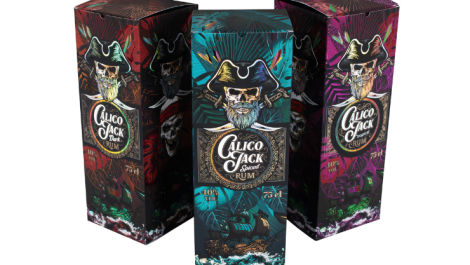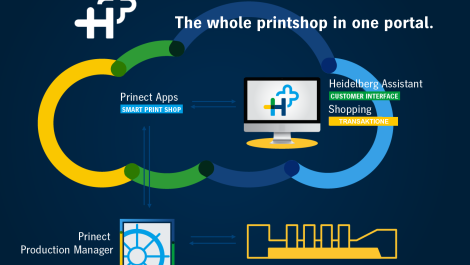The London Digital Book Printing Forum drew a healthy crowd of book printing and publishing professionals to hear about the latest supply chain and digital printing technology perspectives affecting the sector. Andy Knaggs reports.
Key trends in the book market, the evolution of book manufacturing and the supply chain, and the use of digital printing to produce books, were all themes explored at the London Digital Book Printing Forum 2015 in late June – an event run by research and consulting firm Interquest, and attended by 130 professionals from the book sector.
There were speakers from across Europe and North America, including several UK printers and publishers, but it was left to Gilles Biscos, president of Interquest, to set the scene for what was to come, drawing upon research by the organisation.
Mr Biscos revealed that about 80% of European book publishers recently surveyed by Interquest produce books on digital printing equipment, and nearly half say that digital printing has fundamentally changed their supply chain. He also underscored the dramatic growth of inkjet printing in the UK over the past few years. ‘Five years ago there were no inkjet presses producing books in the country. Today, close to 20 inkjet presses are installed in the UK book market, and about 75% of the digital book volume produced by the printers we interviewed is produced with inkjet.’
There was much more discussion about inkjet printing to come, but what followed the initial scene-setting presentations was a comprehensive look at streamlining the supply chain. First up were Andy Cork of Peterborough-based Printondemand-worldwide and Gareth Jarrett, head of Global Production Operations at book and academic journal publisher Taylor & Francis. Mr Cork’s punch line was: ‘Welcome to the age of permanent availability.’ He went on: ‘We are seeing a huge growth in our POD (print on demand) business. Today, 70% of our orders are bespoke ‘book of one’ production.’
The key for his company is to listen to the publishers and work with them, while working on automation and technology to be able to dispatch as quickly as the distributors. Automation has reduced the number of processes in his production line from 17 down to six, he said. Discussing the more than £1 million investment his company recently made on inkjet equipment, he commented: ‘We have put inkjet in, but it’s not the box, it’s the front end and back end. We put more information into the front end in order to batch.’
Indeed a run of 1000 books might be comprised of 1000 different titles, he said. Later, responding to a question about the perception of inkjet quality being inferior, Mr Cork replied: ‘We believe our inkjet quality is better than litho. With a book of one, the weight does not matter, so we will use better quality paper. We want a technology that can run both qualities at the same time. At the Book Fair we found that 40% of people did not know the difference.’
Gareth Jarrett said that Taylor & Francis has to be able to react very quickly to the market now, because ebooks will otherwise fill the gap. The company currently has 83,000 ISBNs, representing 70% of its list, now available through POD or ASR (Automated-Stock-Replenishment); three-quarters of these titles have no, or very low, stockholdings. He also indicated that longer run inkjet ASR is growing rapidly in the UK, with 800 ISBNs added since September 2014.
It has meant a lot of time and expense in cleaning metadata and developing a file distribution engine for global delivery of titles, underpinned by upgraded digital order feeds and a new content management system. Mr Jarrett said that there were some concerns about digital print quality – both toner and inkjet – and that colour consistency needed to improve, particularly in medical publishing. The cost of colour digital is another concern, but overall he said he was ‘very bullish’ about the future of print, especially if the supply chain can deliver with the necessary rapidity to stave off the need to choose an ebook instead.
Also speaking in this session wasMathijs Suidmanfrom the book distributor Centraal Boekhuis in the Netherlands. It has 80,000 titles, 17,000 of which are available POD, which it started offering in 2011. It views its POD as ‘just another warehouse’, he said, and the print partner simply must produce the books. Publishers understand that if a book is not available, it’s in trouble, and POD enables them to never miss a single sale. He concluded: ‘We hope to produce four million single copy POD books a year in a couple of years, so we need solutions for efficient distribution and print process; we are working closely with printers to optimise the stock process.’
Mark Sanderson, content operations manager at Emerald Group Publishing agreed that speed of publication was the biggest factor for publishers today, and said that the company was working with its supply chain on that. His session was actually a Q&A, with Jonathan Huddart, head of sales for books and journals at CPI, asking the questions. Mr Huddart asked what further opportunities there were to develop the supply chain.
‘I think the biggest change will be moving to XML,’ said Mr Sanderson. ‘It gives us the opportunity to create new content and spin off material. There is an opportunity for printers to work with us repackaging content like that.’

Enter the vendors
Executives from leading digital printing systems suppliers highlighted their companies’ recent developments in book manufacturing and digital printing, and looked ahead to drupa 2016, in the afternoon session. The participants were:Reinhold Frech(sales & marketing director for Commercial Printing Group, Canon EMEA),Mark Hinder(market development manager PPD, Konica Minolta),Benoit Chatelard(vice president of Ricoh Europe’s Production Printing Business Group), andJohn Conley(vice president for Publishing and Commercial Print at Xerox).
The panel was first asked what developments each company had made in book printing in the last six to 12 months. There were a number of new developments from each company. Canon has introduced its 160 metres per minute ImageStream 3500 and 2400 continuous inkjet engines, rolled out the first installations of its cut sheet mono VarioPrint 6000, and is continuing to develop toner technology such as the VarioPrint 4000. At Konica Minolta, there have been partnerships with Komori and MGI, the first of which will result in the Ipex-demonstrated KM1 inkjet press. Mark Hinder said development of this was on schedule, with a heavy focus on quality and printing on standard offset stocks with no pre-coating.
Ricoh announced a new inkjet press, the 120 metres per minute VC60000, in November 2014, which already has half a dozen installations, as well as its new cut sheet flagship, the Ricoh Pro C9100 and the white/clear toner equipped Pro C7100. It also is selling Avanti Slingshot MIS and its own BatchBuilder software now. For Xerox, there has been the acquisition of Impika which took it into colour inkjet, the launch of the entry level colour Rialto 900 inkjet, which can print roll-to-sheet (which John Conley said would work well for distribute and print environments), and developments on the mono and Freeflow software sides.
What follows is an edited version of the continuing panel discussion:
Question: What is your take on the changes in book printing and technology in the last 12 months?
Benoit Chatelard: From the type of project coming through, we have seen a move from very high volume black and white trade books to more colour speciality and short run. That’s very visible now. Not necessarily inkjet but some high volume toner is very suitable to the books too.
John Conley: The first time I showed inventory management was in 2002 and every year some large publishers socialise that model now. Smaller publishers are still reticent to adopt the model. That tells us that we still have a lot of work to do to educate them that there is a platform there that can help their business if they adopt it. Many small publishers don’t have a warehouse, they use printers to do that, and it’s still a struggle to get them to make the move.
Reinhold Frech: We see that digital printing is established and as a provider of presses we have a responsibility for that market, so we organise conferences and workshops to bring together publishers and printers.
Mark Hinder: We have looked at what innovation means right through the supply chain. One thing we hear right through is ‘I have got pressure on margins’. We have to work as an industry on that to create new opportunities.
Q: What can we expect from the next drupa?
BC: Drupa is no longer fixing the marketing calendar. It’s not the only moment that things happen. There will be new things but it might not be the unique or big thing. I think we also need to move to applications: not just a forum for technology, but how to use it and make money out of it. We should share knowledge, best practice and innovation, and drupa should be that.
JC: I think that’s exactly what drupa will be. I also think this will be a very important ‘ink drupa’. There are hundreds of millions of dollars of research going into ink. It took a long time to bring the book market into digital printing, and no-one can afford to spend that long with magazines and catalogues. This will also be software, IT, how do I put up a global print network. You will see less hardware coming to drupa: the printers want to know how they make money from it. We can show them that, and that will be far more important this drupa.





